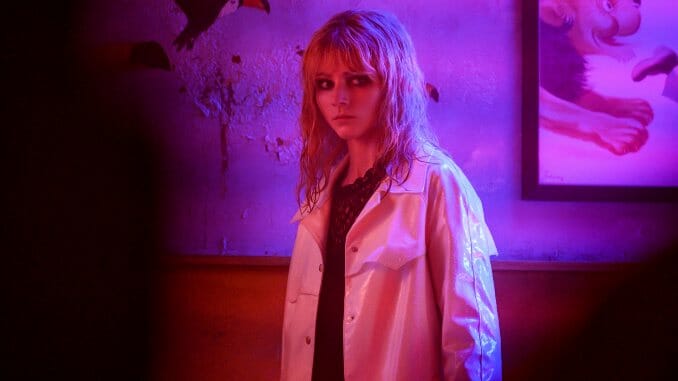Edgar Wright Flexes His Signature Style for Bold and Chic Psycho-Thriller Last Night in Soho

Ever since his career took off two decades ago, Edgar Wright has remained one of the only directors to completely master the art of making movies fun. Indeed, each of his feature films deliver pure, uproarious enjoyment. And in his newest film, Last Night in Soho, he leans into the magnetic quality that reminds us that this is an Edgar Wright film. From the laugh-out-loud zombie hijinks in Shaun of the Dead that makes it impossible to look away, to the flashy videogame effects that make Scott Pilgrim vs. the World a stimulating, immersive experience, Last Night in Soho combines all the components that make his previous films click to create a uniquely engrossing viewing experience.
Last Night in Soho follows Eloise (Thomasin McKenzie), who moves to 2010s London from the English countryside to study fashion. While there, she begins having vivid nighttime visions that transport her back to her neighborhood in the 1960s. Eloise appears in her visions as Sandie (Anya Taylor-Joy), a glamorous aspiring singer who lived in the same apartment as Eloise in the ‘60s. But what starts as a flashy ode to the dazzling nightlife of old Soho quickly spirals into a riveting, pulse-raising murder-mystery.
Last Night in Soho is seductive and lively from its very first moments. It opens on Eloise dancing to Peter & Gordon’s “A World Without Love,” a positively joyful 1960s bop, wearing a dress she made out of newspaper. This is just the film’s first dance sequence, and properly sets the exhilarating tone of the rest of the film. This upbeat energy only picks up when Eloise arrives in London. The streets of Soho are presented through Eloise’s eager, bewitched eyes: The fluorescent signs glow with an extra pop of color; young, attractive people practically dance through the streets; cars whiz by. And when Eloise is transported back to the ‘60s, her enchantment only increases. The entire neighborhood is lit with a radiant golden glow, which puts us so in tune with Eloise’s excitement that when men open doors for her, it feels like they’re opening the doors for us. And this stamina continues throughout the rest of Last Night in Soho. Not a single breath is wasted: From inspired needle-drops like Dusty Springfield’s dreamy “Wishin’ and Hopin’” or Martha Reeves & the Vandellas’ “(Love Is Like A) Heat Wave,” to exquisite dresses and energetic dance scenes.
Of course, Last Night in Soho wouldn’t wield such hypnotic power if it weren’t for its excellent performances. As always, Taylor-Joy seduces the camera with her every expression, but it’s McKenzie’s raw fragility that steals the show. She navigates the strange world of the film with idealistic curiosity, all the while clinging to her penchant for nostalgia. She engages us through the fascination with the world around her that she wears on her face, and makes us feel like we’re maneuvering the old neighborhoods of Soho right beside her.
Visually, this might be Wright’s most intriguing film yet. While all of his films have a distinct visual style—rapid editing, whip-pans, and dolly zooms—Last Night in Soho does something a little different, and pulls from the Italian giallo horror subgenre’s extreme, bright colors and theatrical sets, which gives the films a dreamlike quality. Wright pays homage to the king of giallo himself, Dario Argento, borrowing bold visual elements from his films like Deep Red and Suspiria (the use of knives as mirrors, a fixation on the color red). But he isn’t interested in only riffing on one genre: He also pays tribute to noirs, notably Roman Polanski’s psycho-thriller Repulsion, which also follows a woman who experiences frightening hallucinations rooted in a fear of men.
-

-

-

-

-

-

-

-

-

-

-

-

-

-

-

-

-

-

-

-

-

-

-

-

-

-

-

-

-

-

-

-

-

-

-

-

-

-

-

-








































